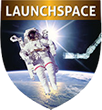Course Details
Course Summary
This course offers a detailed look at basic spacecraft avionics systems engineering and design
processes and principles. All spacecraft avionics systems are similar, but not all are the same.
This course addresses the up-front systems engineering process; requirement levels, trade
studies, requirements allocation/linking requirements derivation, requirements verification,
risk and risk assessment, safety, integration and test, costing and scheduling. This is all
applied to the avionics system level design on a subsystem-by-subsystem basis. Attendees will
learn about avionics subsystem designs that are utilized on satellite buses. The course content
includes a discussion of terms, nomenclature and rules of thumb that are used in the
development process. Each avionics subsystem is explained in detail to gain insight into
manpower and cost requirements. In addition to spacecraft avionics equipment, the design,
fabrication, and qualification of the electrical ground support equipment required to operate
satellites are discussed in detail.
Course Materials
Each attendee receives extensive notes and reference materials.
Who Should Attend
Space, Spacecraft, and Launch Vehicle Systems Engineers, Avionics Subsystem Designers, Managers, Business Development personnel, System Safety Engineers, Risk Engineers and Managers, Electrical Ground Support Equipment Engineers, Integration and Test Engineers, and Environmental Test Engineers.
What You Will Learn
Applying the systems engineering process and principles to the system level design, developing the overall and subsystem architectures and then down into each of the Avionics Subsystems. How the systems engineering process is applied to evaluate and determine the risks, safety, and trade studies to the requirements derivation process, subsystem design, and then requirements verification.
Course Outline
1. Definitions.
Fundamental definitions and terms for spacecraft avionics systems and subsystems.
2. Systems Engineering Process.
Exploration of the classic systems engineering “V” process and how it is applied at the
mission, systems and subsystem levels, for both spacecraft and instrument to deliver a
system that meets stakeholder expectations.
- a. Systems Requirements:
Starting at the customer/stakeholder level 1, allocating down to Level 2,
performing trade studies within levels 1 & 2 refining the mission requirements for
optimum level 2 requirements. Allocating requirements to level 3 with trade
studies refining level 2 & 3 for optimum spacecraft and/or instrument
architecture. Further requirements allocation and derivation, requirements
management, verification and validation. Using the Concept of Operations to
further refine Level 1 & 2 requirements.
- b. Requirements documentation:
Generating the Program/Project level documentation.
- c. Mission Assurance:
Correlation of the radiation environment and radiation analysis, risks and safety
assessments to the importance of system and subsystem architectures and
requirements.
3. Scheduling.
Understanding the scheduling process from Program/Project Milestones, to mission, to
system, to subsystem levels. The correct allocation, linking and resource loading too
enable successful program execution and cost control.
4. Costing.
Understand how costing your activity is closely coupled to the scheduling, requirements,
verification and validation processes.
5. System Architecture.
How high-level trade studies, requirements, requirements verification, and mission
validation process lead to a concise system level architecture; allocation to subsystem
level requirements and architecture, derivation and linking back to mission level 1
requirements.
6. Testing.
How testing to lower level requirements leads to higher-level verification and mission
validation. The overall test flow and pitfalls. Electronic ground support equipment for
board-to-box-to-system level and environmental testing-to-operations.
7. Subsystem Level Architecture.
In-depth subsystem level architecture for Guidance, Navigation and Control (GN&C),
Command and Data Handling (C&DH) including Flight Software (FSW), RF
Communications (RF Comm), Electrical Power (EPS) and Propulsion (Prop).
Instructor
George Andrew has over 35 years of experience relating to satellite, instrument and launch vehicle avionics design, manufacturing and testing. In addition, Mr. Andrew has extensive mission and systems engineering, and program/project management experience. He has consulted with start-up launch vehicle and spacecraft companies, managing the flight and ground hardware/software design, development, test, and launch. Mr. Andrew has been the program/project manager for several spacecraft program contracts and the Avionics Department Manager for two start-up launch vehicles. He is currently supporting a NASA Earth Science Program Office in the Program Systems Engineering office. Mr. Andrew is President of GNA Aerospace Consulting Group and is an Associate Fellow within the AIAA.
